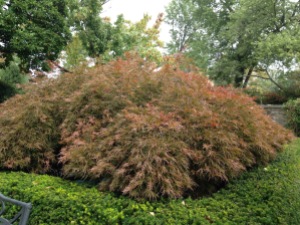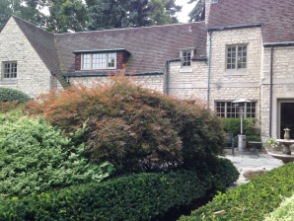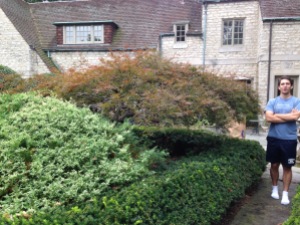My spouse calls me the ‘Water Nazi’. Everyone has something they tend to be passionate about (ok, compulsive), and wasted water is mine. Gardeners know that effective watering the first year after planting is essential to the success of their plants. After all the grumbling I heard from clients last year about water bills, I am offering some of my favorite watering tips.
The most important thing to remember is to slow the water down. The slower it moves, the more of it gets absorbed where you want it, and no water will be wasted by running off.
The most obvious way, is to slow the water flow from your hose to a trickle or slow stream. Let it run for a spell while you pull weeds, or set a timer and do something else.
 My favorite watering tip is to fill a five gallon bucket with nail holes in the bottom of the side with water. Place it next to the base of the plant and you are done! Restaurants are a good resource for food storage buckets. For big plants, use three at once. Just imagine: the number of plants you can water in an hour is limited only by how many buckets you’re able to set out!
My favorite watering tip is to fill a five gallon bucket with nail holes in the bottom of the side with water. Place it next to the base of the plant and you are done! Restaurants are a good resource for food storage buckets. For big plants, use three at once. Just imagine: the number of plants you can water in an hour is limited only by how many buckets you’re able to set out!
Create contours, or reservoirs around plants and in the soil surface. Resist the urge to smooth the soil once you have planted a flower bed. Instead, before spreading mulch, make the soil surface choppy. Think Lake Erie on a windy day. The water will pool in the craters, and the mulch will conceal them. This is especially helpful for watering a slope.
Keep a five gallon bucket with a handle beside the kitchen sink to catch rinse water, and use it to water houseplants and plants under eves. We empty ours two to five times a day, sometimes more!
When using an oscillating sprinkler as intended, especially when it’s hot, too much water is evaporated before it hits the soil. Try holding it like a watering wand to water sod, a seeded area, or a long narrow bed.
I only recommend using soaker hoses with caution because the amount of water delivered depends on your water pressure, and the distance from the hydrant. More water is released at the beginning of the hose than at the end. If you do use a soaker hose, it should be buried in the soil or mulch, close to the roots to prevent evaporation. It is always wise to investigate water absorption 6-8 inches deep with a trowel or soil knife to see if you are getting a thorough soaking.
Water wise: save time and money!
















